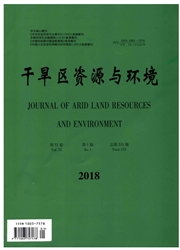

 中文摘要:
中文摘要:
利用2000和2010年中国人口普查数据,通过GIS分析中国地级层面人口流动的空间格局和地域类型,并采用空间Durbin模型衡量人口流动对城镇化的空间溢出效应。研究发现:1)中国地级及以上城市流入人口空间分布不平衡,以"胡焕庸线"为界,其东南半壁持续增加,西北半壁基本没变;2)从2000到2010年流出人口由"多核心"变为"双核心",高流出区与高流入区在"胡焕庸线"东南半壁整体成互补关系,低流出区与低流入区在"胡焕庸线"西北半壁基本一致;3)流动人口地域类型在"胡焕庸线"东南半壁为净流入型活跃区和净流出型活跃区,西北半壁为非活跃区;4)空间Durbin模型回归结果显示,流入人口和流出人口均对城镇化溢出效应为正,其中,流入人口的影响大于流出人口,从其他控制变量来看,资源禀赋对城镇化的影响最大,投资、消费和工业化对城镇化同样有正向促进作用。
 英文摘要:
英文摘要:
Based on China's census from 2000 to 2010 , by using GIS we analyzed the spatial pattern of floating population and its regional types in the scale of prefecture - level administrative region. Space Durbin econometric model was adopted to measure the spatial spillover effects of floating population on urbanization. The results show that : (1)the inflow population spatial distribution was unbalanced ; on the southeastern side of Hu Line it increased highly, while that on the northwestern side of Hu Line it basically unchanged. (2)From 2000 to 2010, the outflow population changed flow population became into a from "multi core" to "dual core", and the spatial distribution of outflow and incomplementary relationship as a whole on the southeastern side of Hu Line, and the low outflow and low inflow areas were mainly distributed on the northwestern side of Hu Line. (3)For the regional types, it was mainly net inflow population active and net outflow population active region on the southeastern side of Hu Line, and inactive region on the northwestern side of Hu Line. (4)The regression results of space Durbin econometric model showed that both inflow and outflow population had a positive effect on urbanization, and the influence of inflow population was greater than outflow population. In terms of other control variables , the resources endowment was the biggest impact on urbanization, and investment, consumption and industrialization also had a positive effects on urbanization.
 同期刊论文项目
同期刊论文项目
 同项目期刊论文
同项目期刊论文
 期刊信息
期刊信息
